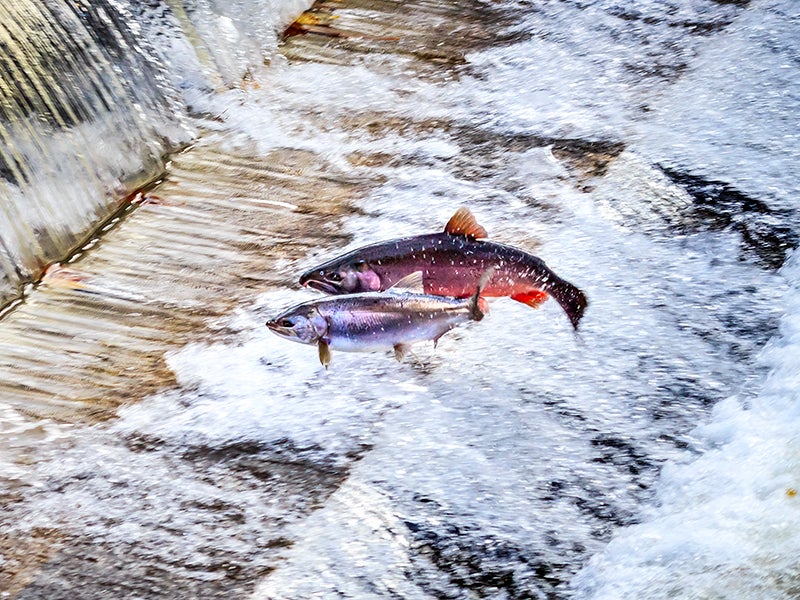Earthjustice goes to court for our planet.
We’re here because the earth needs a good lawyer.
We’re Fighting To Save Salmon From Deadly Heat Waves
This page was published 4 years ago. Find the latest on Earthjustice’s work.
Climate change and intense heat waves are exacerbating harsh conditions for salmon in the Pacific Northwest. Salmon start suffering when water temperatures rise above 68°F — something that is becoming more common and more severe as river temperatures rise due to extreme heat. The fish often try to take refuge in cooler areas, like tributaries — that is, if they have access to those habitats.
We’re working on a proven and effective way to improve conditions and save the wild salmon: restoring the Lower Snake River.
Why is the Lower Snake River the key to saving Pacific Northwest salmon?
- The Columbia and lower Snake Rivers are migratory superhighways for salmon.
- The salmon’s survival is primarily threatened by man-made dams which create barriers to their migration to and from the ocean.
- Dams also make water temperatures rise by holding back water in large reservoirs that heat up in the sun as compared to a free-flowing river that water moves through quickly.
Why are salmon in the Pacific Northwest important?
- Snake River salmon and steelhead are an important part of the Northwest way of life and have been listed as threatened or endangered under the Endangered Species Act since the mid-1990s.
- Salmon play a major role in the diet and cultural practices of many Native American Tribes across the Northwest, including the Nez Perce Tribe with its reservation above the last lower Snake River dam.
- Endangered orcas depend on Chinook salmon from the Snake/Columbia River as a critical prey resource. Too few Chinook mean orcas are starving.
What are some stop-gap solutions to help protect the salmon?
- Increased water releases, or “spills,” from the dams during certain times of the year can help flush baby salmon past the dams in their journey to the ocean, and improve salmon survival.
- Too much spill can hurt the fish, but there are measures in place that limit spill to an amount that is safe for salmon.
- Another solution to help get young salmon to the ocean faster is to lower the reservoir levels above each dam, thus moving water through them faster.
- A quicker migration means endangered juvenile salmon are less susceptible to predators and disease in the slack water above each dam.
- A lower reservoir also has a smaller surface area and faster water travel time, so the water heats up less. Again, water that is too hot kills salmon.
What is the best long-term solution to help protect the salmon?
- River restoration is a proven and tremendously effective method to save the salmon.
- We must make major structural changes to the federal dams to help salmon in the long term.
- The most critical change is to bypass the four dams on the lower Snake River and restore a key 140-mile river segment to a free-flowing condition.
What is Earthjustice doing to protect the salmon?
- We went to court in July 2021 on behalf of 11 fishing and conservation groups to ask the Court for an injunction that, in part, would require the federal agencies to spill more water at the four lower Snake River dams, thus saving more endangered salmon and steelhead.
- We are also asking the court to require lower reservoir levels above each dam to speed up the seaward migration of these fish.
What can I do?
Tell your Congress members that you don’t want these fish to go extinct, and that they should help restore the Snake River.
